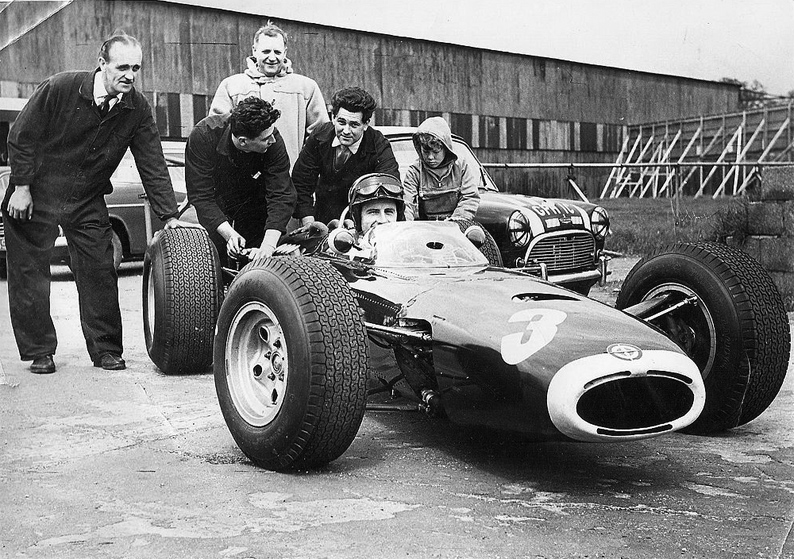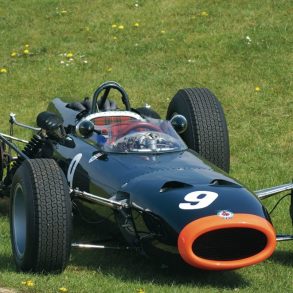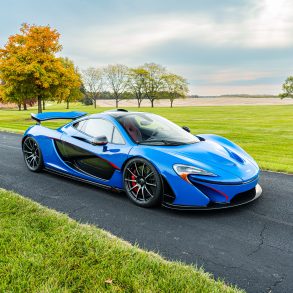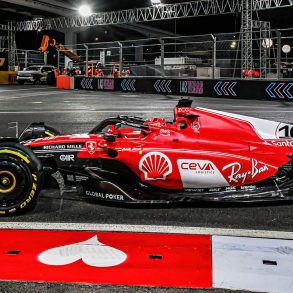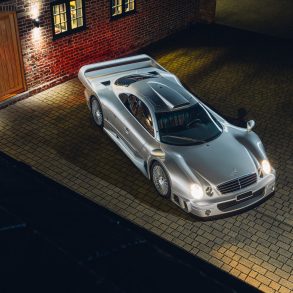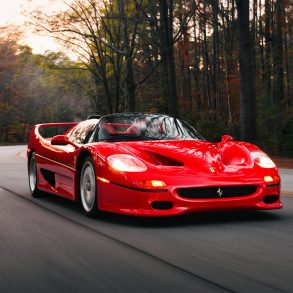BRM P56
Car: BRM B56 / Engine: 90º V8 / Maker: BRM / Bore X Stroke: 68.5 X 50.8 mm / Year: 1962 / Capacity: 1,498 cc / Class: Formula 1 / Power: 188 bhp at 10,250 rpm / Wheelbase: 89.8 inches / Track: Front: 52.5 inches / Rear: 52.2 inches / Weight: 1,091.3 lbs
The beginnings of British Racing Motors (BRM) can be found in the pre-war ERA team. Raymond Mays and Peter Berthon dreamed of a car that could beat the best that Italy and Germany could offer. Influenced by the government sponsorship provided to Mercedes-Benz, Auto Union as well as Alfa Romeo they sought and with the help of leading figures in the British manufacturing industry established the British Motor Racing Research Trust. Enthusiasm soon out paced reality and a booklet was published entitled BRM Ambassador for Britain: The Story of Britain’s Greatest Racing Car.
The only thing missing was an actual car which hadn’t been built yet, nor would it be for quite some time. Still without a car an executive committee of Tony Vandervell, Bernard Scott of Lucas, Alfred Owen as well as the two originators took over the decision making. They in turn had to work with an advisory committee which met twice as year. Incompetence was replaced by internal turmoil and political intrigue. Tony Vandervell quit in disgust to start his own Vanwall team.
Finally in 1950 the car was ready. Its debut was to take place in front of the King and Queen at Silverstone. The driver or more accurately the passenger was Raymond Sommers for the care broke both drive shafts on the starting line. When finances dried up due to the lack of any success the entire effort was sold to Rubery Owen. Efforts were made to upgradethe entire operation but the team still suffered from what Stirling Moss called a “…classic example of a small concern convincing itself it was Mercedes-Benz and going into the high technology racing car business deeper than either its competence or its finances would allow.”
Yet even with all the problems that inflicted the team from Bourne they employed too many talented people for there not to be at least a modicum of success. After 10 years of racing V16s the team had only one victory to its credit. Tony Rudd took over technical leadership of the team with Berthon moving to Rye and delegated with long-term projects. One of those projects was the Project 56 1.5 liter V8 engine. Originally intended to serve as a customer engine it would instead power BRM to its one and only World Championship. In partnership with Lucas the engined used the state of the art fuel injection as well as transistorized ignition which allowed it to operate at an rpm of 11,000 and more. The space frame chassis was designated the P578 and for 1962 the Mark III version was ready. The overall profile of the body was wider than the cars from Lotus and Lola and made of ultra-light Elektron rather than glass-fibre. The car with its new engine finally appeared for the 1962 season and soon lived up to its initial tests at the hands of Graham Hill.
The season saw a fierce battle between Hill and Jimmy Clark driving for Lotus. At Monza the two leaders in the title fight were first and second on the grid. Clark surged into the lead at the drop of the flag but by the time the cars came around for the completion of the first lap the BRM of Graham Hill was in the lead. The third time around the green Lotus was nowhere to be seen, that is if you were looking for it on the track rather than back at its pit. Out with a seized transmission Clark could only watch his friend and rival Hill raced to a solid win and claimed a commanding lead in the Championship. Ginther in the other BRM was able to make it 1-2 for the team from Bourne. After fifteen years and numerous setbacks that at times led to public ridicule, the championship was in their grasp. Unfortunately for them nobody had informed the Scotsman Clark that all was lost and after a convincing win at the United States Grand Prix the title would be settled in South Africa. Hill, who enjoyed a nine point lead on his rival had earned the maximum points allowed based on his complete races but Clark could still take the Championship on victories. And so it was that the failure of a 50 cent piece of hardware ended Clark’s Championship hopes in East London and gave the crown to Hill. Racing is all about skill mixed in with preparation and a little bit of luck and no one begrudged the new Champion on that day.
At thirty-three, after six years of racing and only nine years from receiving his first driver’s license Graham Hill became England’s most popular champion. Starting as a mechanic earning 1£ a day he reached racing’s highest goal, Formula 1 World Champion. BRM also claimed the Constructor’s Cup for themselves though ironically this could well have been their last season as Sir Alfred Owen had demanded results or else…


